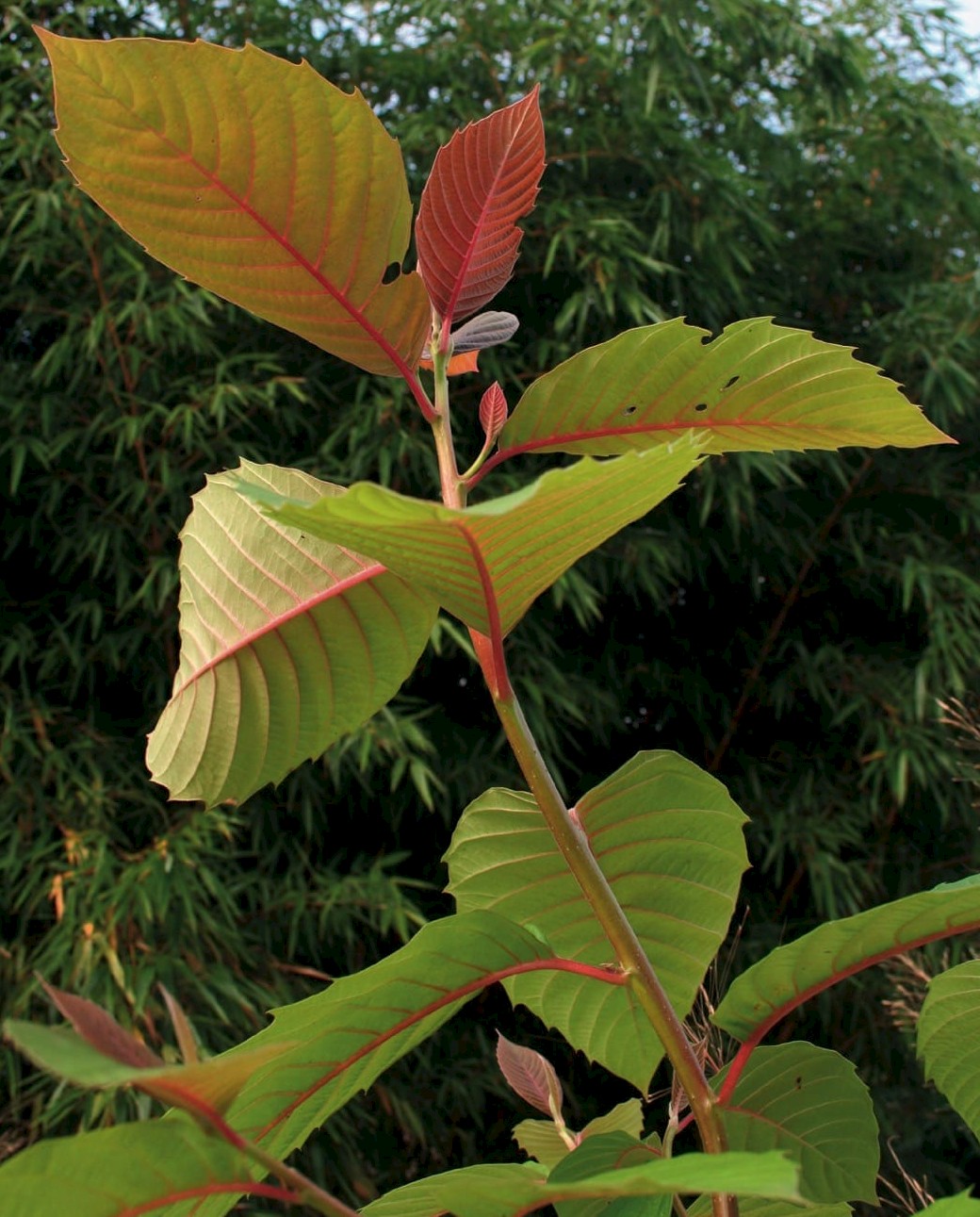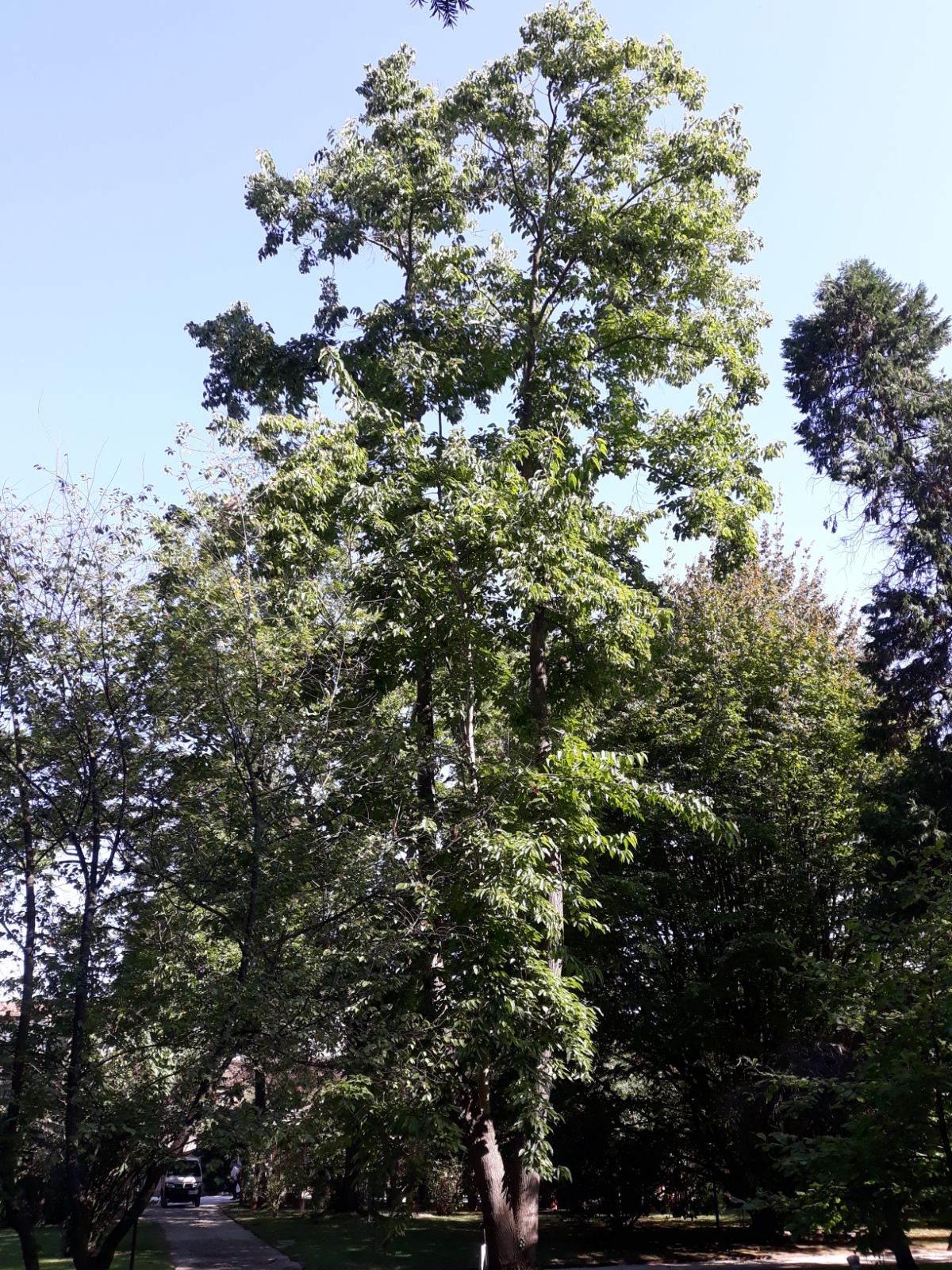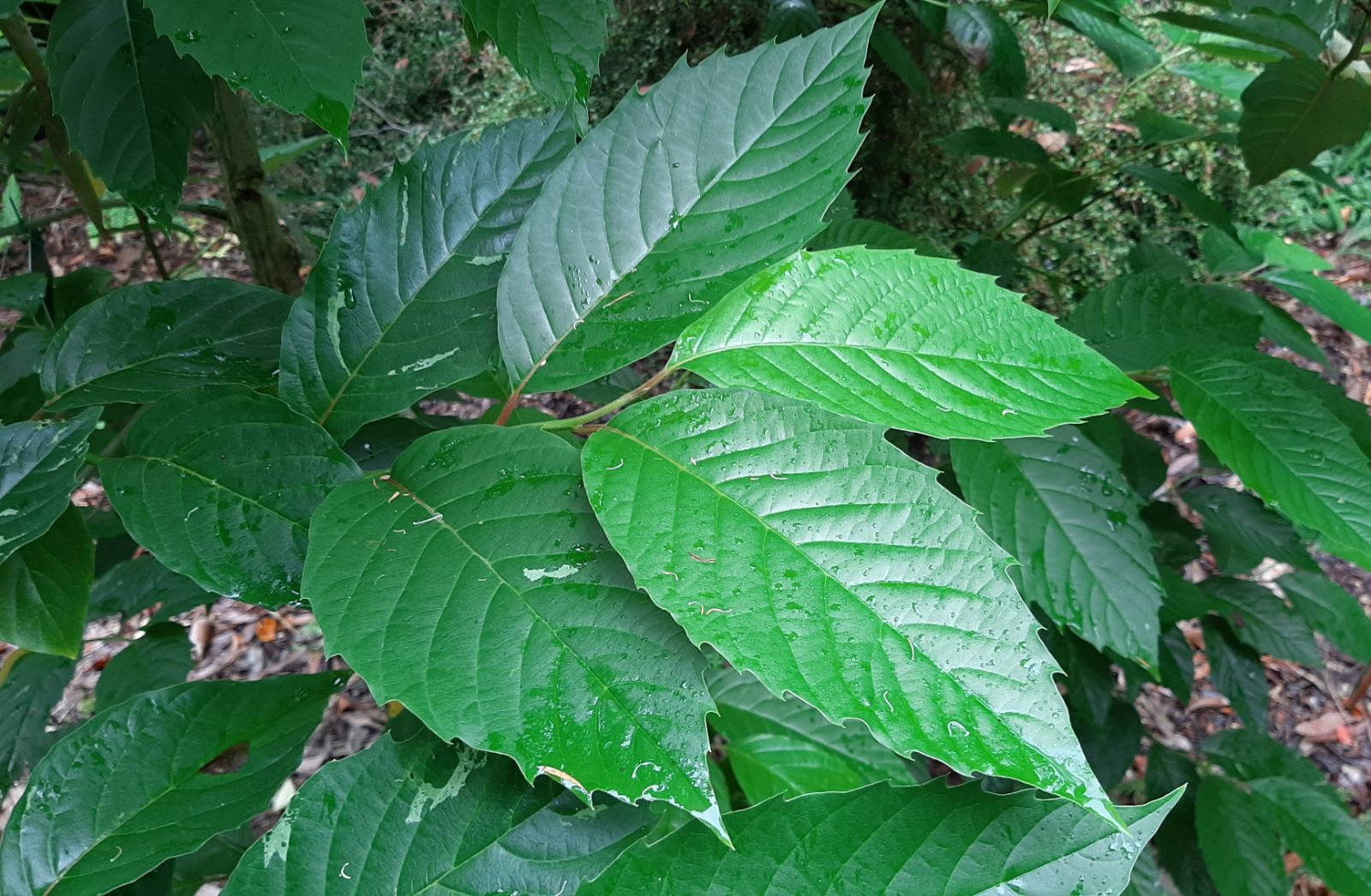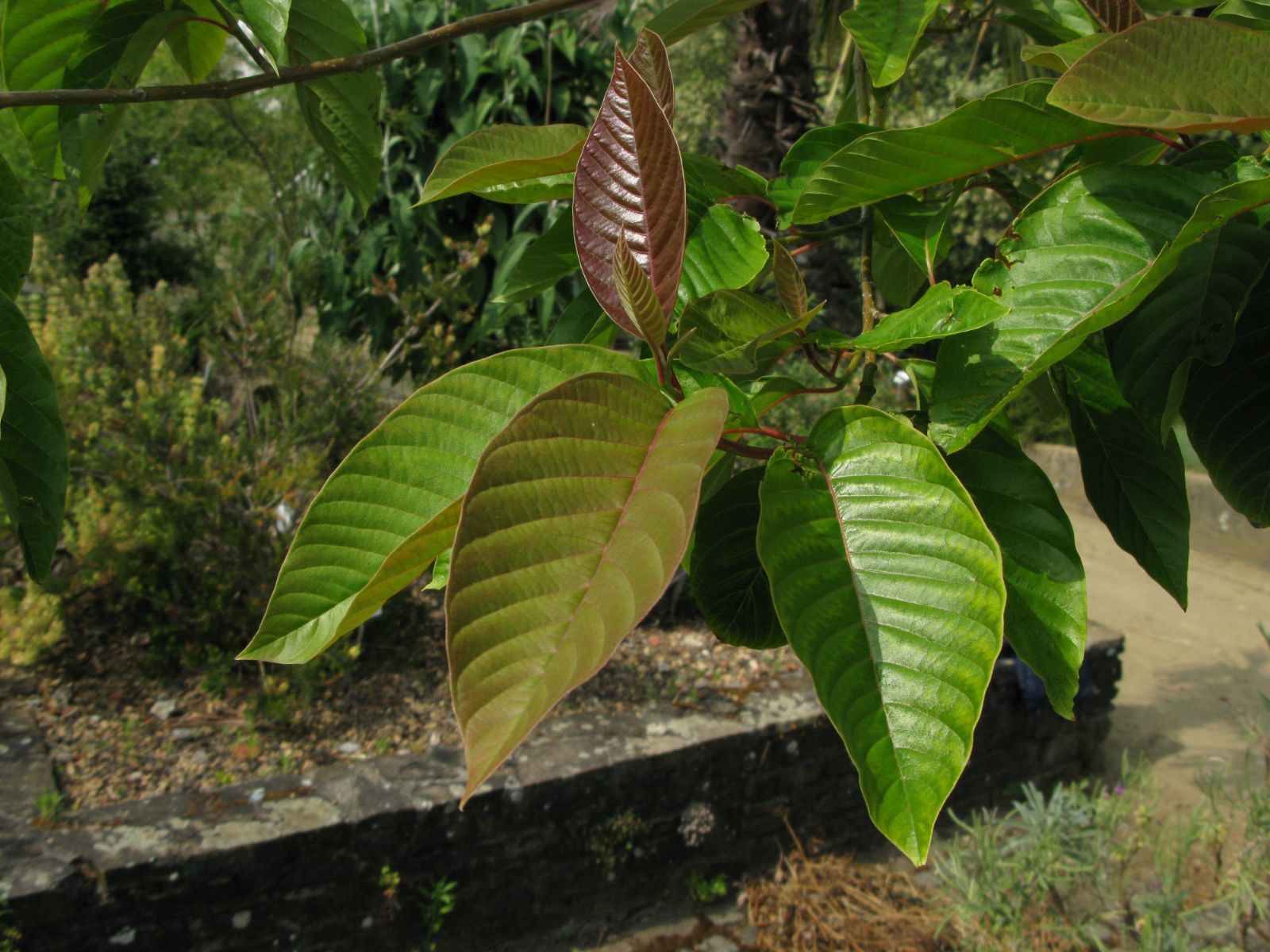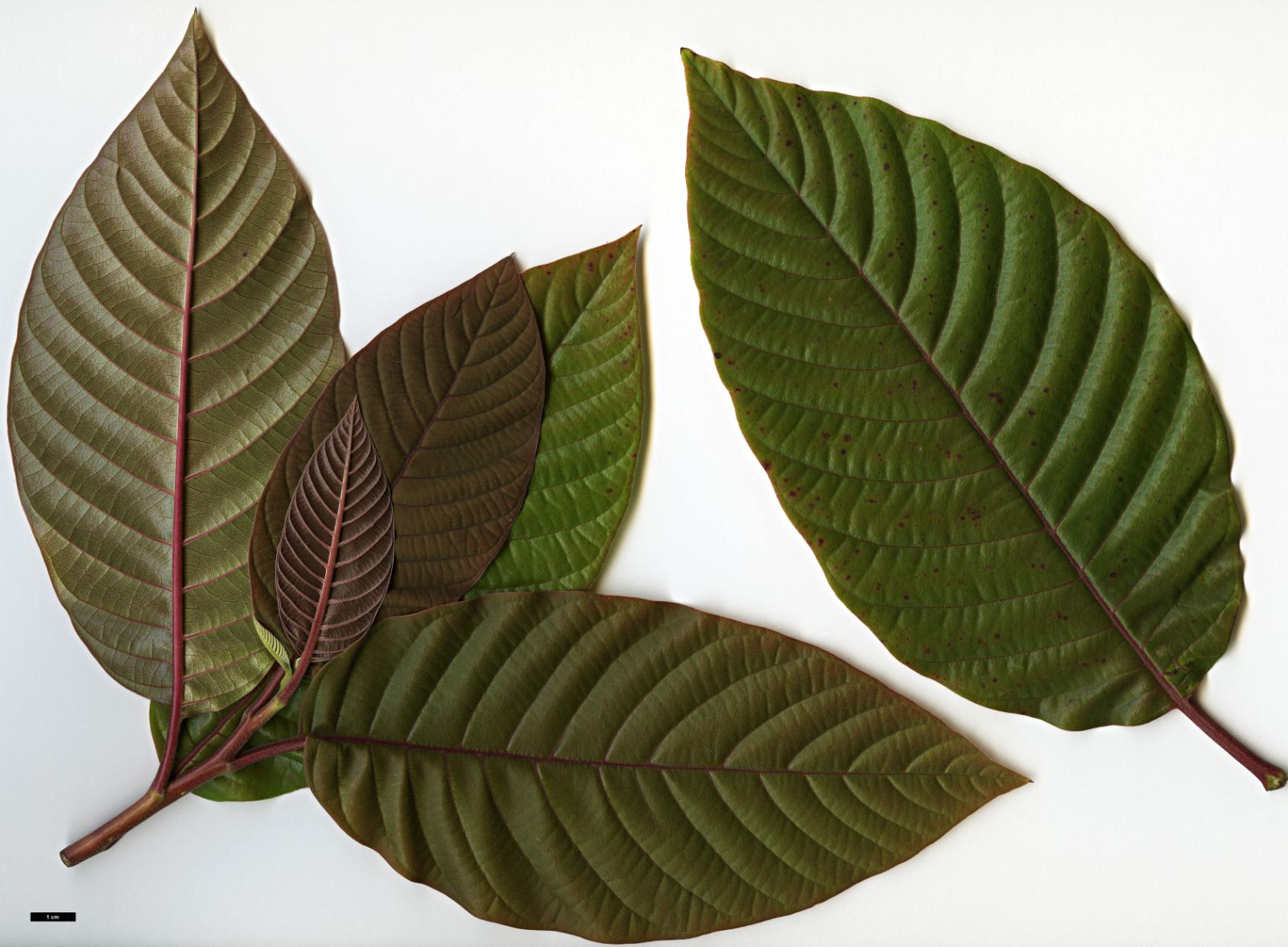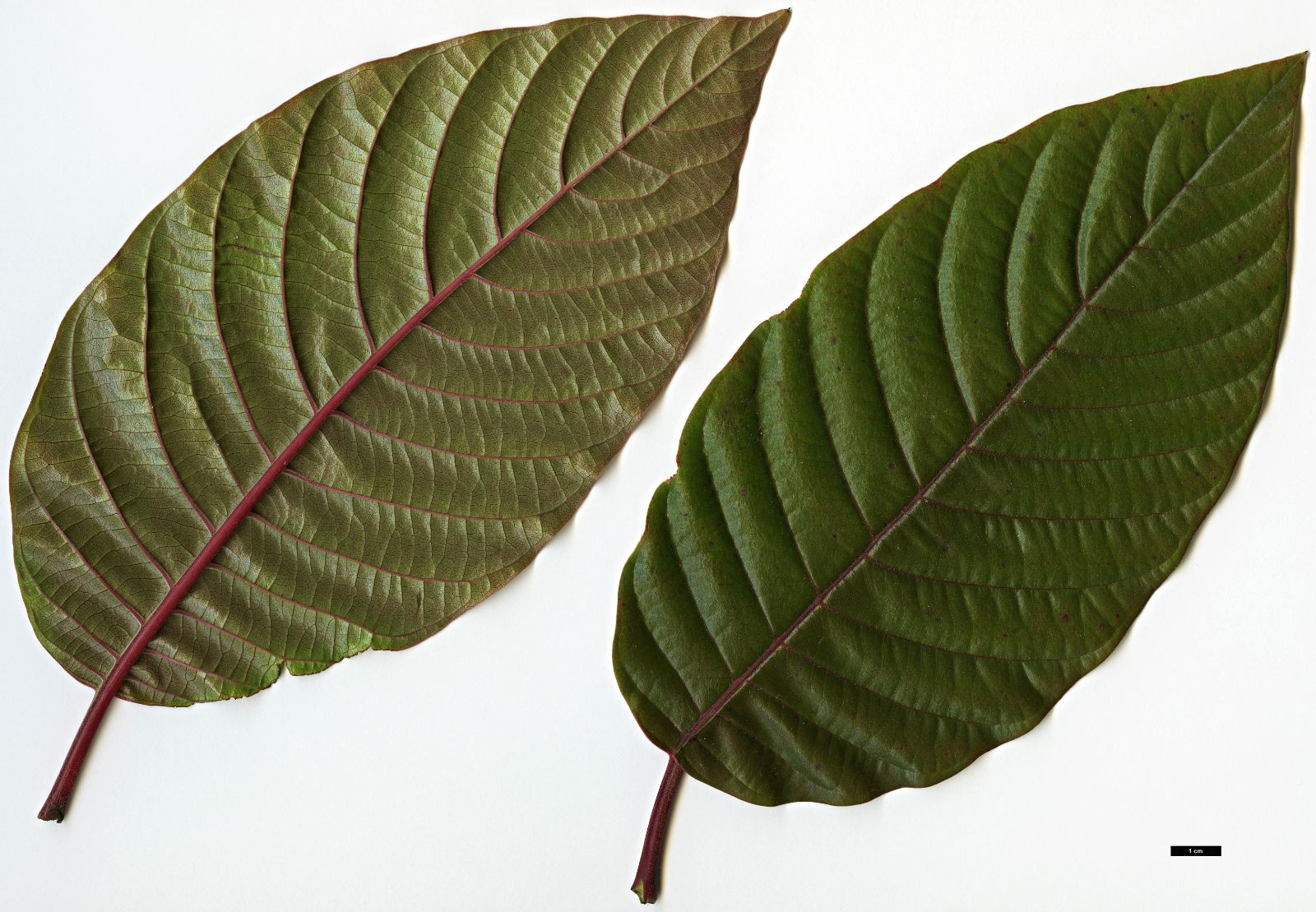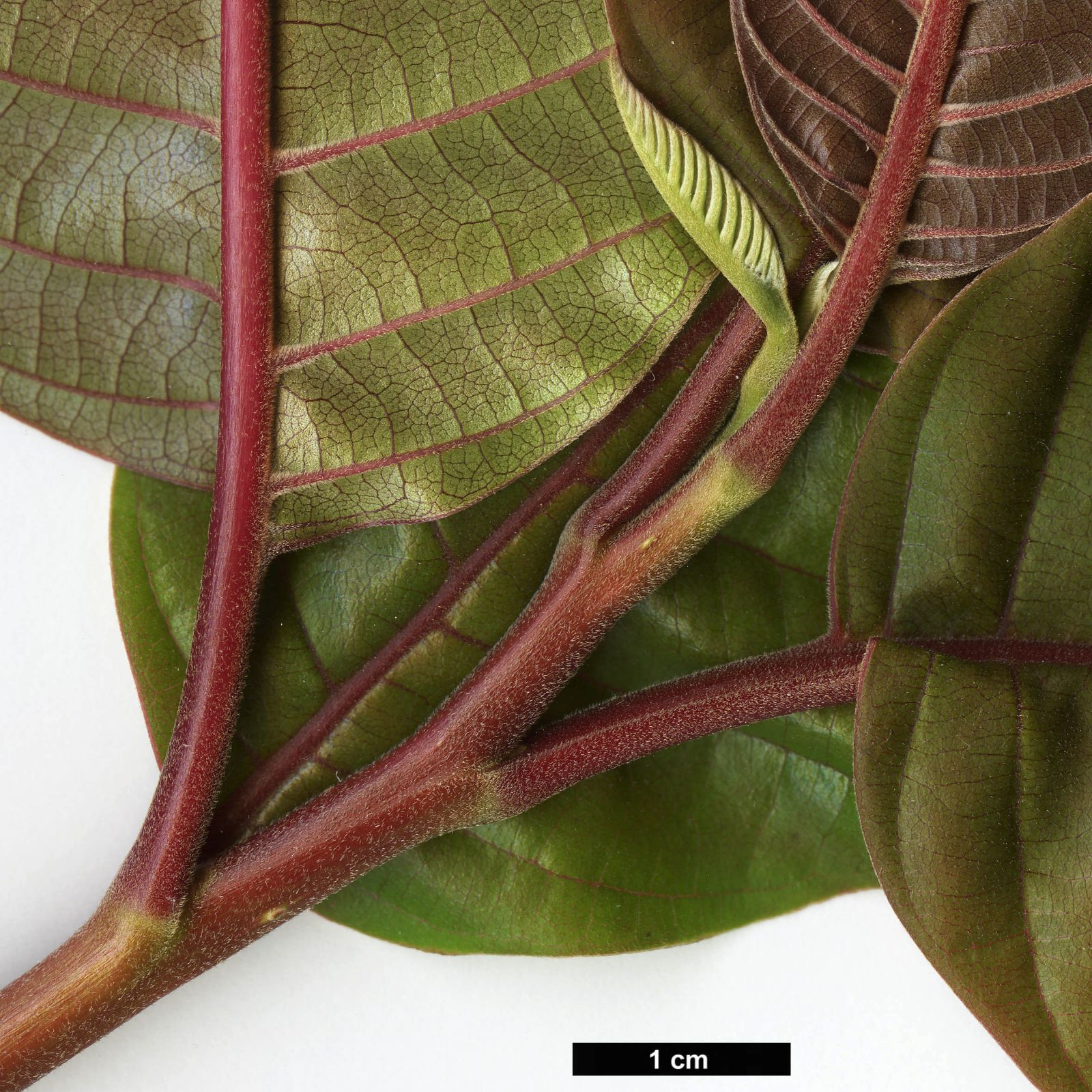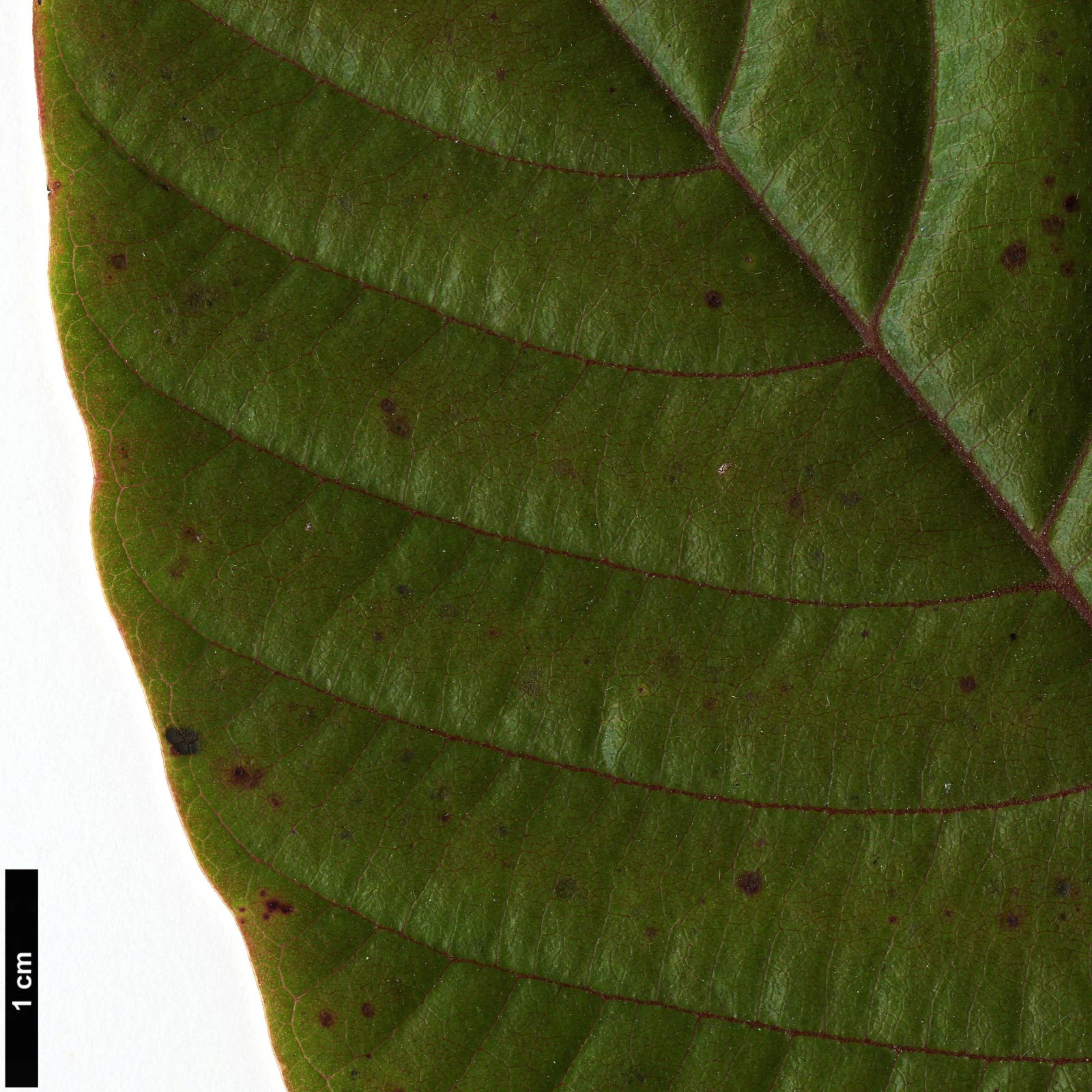Camptotheca acuminata
Credits
Article from New Trees by John Grimshaw & Ross Bayton
Recommended citation
'Camptotheca acuminata' from the website Trees and Shrubs Online (treesandshrubsonline.
Genus
Common Names
- Chinese Happytree
- Cancer Tree
Other taxa in genus
Tree to 20 m. Bark pale grey and deeply furrowed. Branchlets purplish, pubescent to glabrous. Leaves deciduous, 12–28 × 6–12 cm, oblong to elliptic or ovate, rarely orbicular, upper surface glabrous to slightly pubescent, lower surface largely glabrous, but with tufts of hair in the vein axils, (4–)8–11(–15) secondary veins on each side of the midvein, margins entire, apex acute; petiole 1.5–3 cm long, slightly pubescent. Inflorescences terminal and axillary, terminal heads hermaphrodite, lateral heads staminate only, 1.5–2 cm diameter, spherical and composed of two to nine flowers, with three triangular bracts. Flowers hermaphrodite or unisexual, corolla pale green, 5-merous and 0.2 cm long; conspicuous disc on the ovary. Fruit 2.5–3.5 × 0.5–0.7 cm, grey-brown and smooth, with thin wings; fruits fall from receptacle separately. Kubitzki 2004, Qin & Chamlong 2005. Distribution CHINA: Fujian, Guangdong, Guangxi, Guizhou, Hubei, Hunan, Jiangsu, Jiangxi, Sichuan, Yunnan, Zhejiang. Habitat By streams and forest margins to 1000 m asl. Common in cultivation in China, particularly along roadsides. USDA Hardiness Zone 9. Conservation status Not evaluated. Illustration Hudson 2004; NT199, NT200. Cross-reference K271.
Of considerable interest for its anti-cancer properties, Camptotheca acuminata is also an attractive ornamental tree with much merit for the garden. A beautiful 15 m specimen in the Medicinal Garden at the US National Arboretum shows what it can do. This has four straight stems from the base, with silvery pale brown bark, bearing a canopy of short, horizontal branches and large glossy dark green leaves. The foliage emerges pink, and the fruit clusters are attractive in autumn (Hudson 2004), although its leaves turn only to a ‘sickly chartreuse green’ (R. Olsen, pers. comm. 2006). Assessments of a tree’s attractiveness are quite subjective: my (JMG) view of this tree, recorded above, as seen briefly in Washington DC, is at variance with that of the staff at the National Arboretum, where it is not a favourite species on account of its habit of dropping limbs and producing copious seedlings to be weeded out (R. Olsen, pers. comm. 2006). This slightly weedy tendency needs to be watched for.
It seems that the first introduction of C. acuminata to western horticulture was made by A.N. Steward, of the College of Agriculture and Forestry, Nanjing University, Nanjing, China, who sent seed to the USDA Plant Introduction Station in Chico, California in 1934 (where it received the plant introduction number PI 13229). From here it was distributed to gardens in southern Californian and the southeastern states, and it has generally been regarded as a Zone 10 subtropical tree (R. Olsen, pers. comm. 2006). It is obviously tolerant of cooler conditions than that, but the hot humid summers of the East Coast are evidently to its liking. It is happy in southern Europe (there is a nice tree in the Botanical Garden (Orto Botanico), Padua, for example), but no successful specimens have been located in the United Kingdom or northern Europe. At Tregrehan it grew for several seasons in a warm but dry situation, but the annual shoots succumbed to winter weather and the plants eventually fizzled out without building up a larger stem that could perhaps have seen them through: a moister spot might have been a better choice (T. Hudson, pers. comm. 2006). According to Nick Macer (Pan Global Plants catalogue 2006), plants are tender when young but become hardier when mature.

